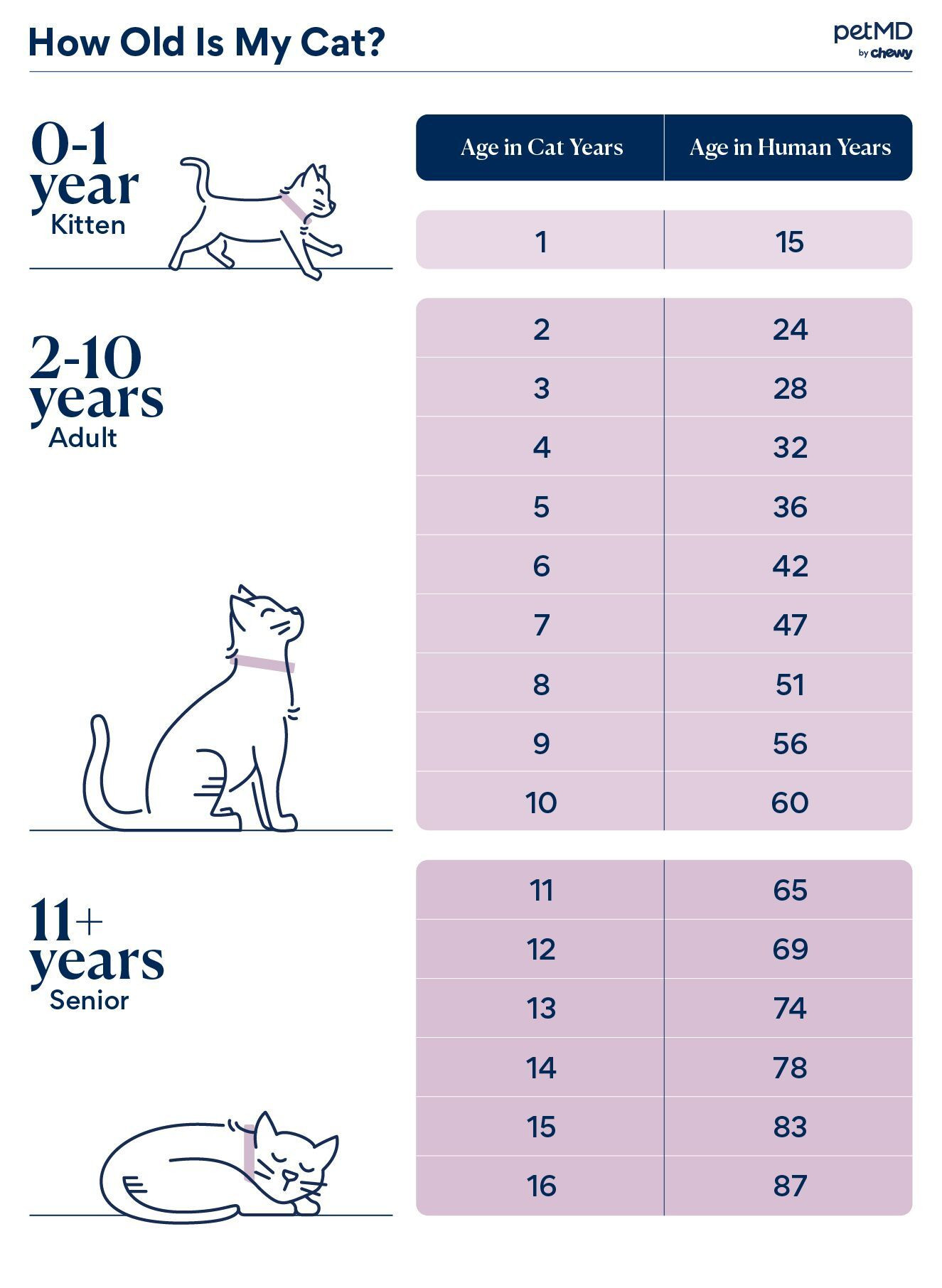Cat parents often wonder how old their feline companions are in human years. It’s a natural curiosity, especially as we celebrate their birthdays and want to understand their life stages in terms we relate to. Understanding the concept of cat years versus human years helps us better appreciate our cat’s aging process and provide them with the appropriate care they need at every stage of their life.
Understanding Cat Aging: It’s Not a Simple Calculation
The common myth that one cat year equals seven human years is a vast oversimplification. Unlike dogs, cats age quite rapidly in their first two years. According to the American Veterinary Medical Association (AVMA), a cat’s first year is equivalent to approximately 15 human years, and by their second year, they’re around 24 in human years. After these initial rapid years, the aging process slows down, with each subsequent cat year equating to roughly four human years. This means your cat matures quickly at the beginning of their life and then ages more gradually as they get older. Breed doesn’t significantly alter this aging rate, making this conversion fairly consistent across different cat types.
How to Calculate Cat Age in Human Years: A Useful Chart
To easily understand your cat’s age in human years, refer to this helpful conversion chart:
 A infographic chart detailing the age conversion of a cat
A infographic chart detailing the age conversion of a cat
This chart provides a quick reference to see how your cat’s age translates into human years, allowing you to better understand their life stage and anticipate their needs. For instance, a 10-year-old cat is approximately 56 in human years, which is considered a senior cat needing specific care adjustments.
Determining Your Cat’s Age When Adoption History is Unknown
If you’ve adopted a cat and are unsure of their exact birthdate, veterinarians have several methods to estimate their age. These estimations are crucial for providing age-appropriate healthcare, even without knowing their precise birthday. Veterinarians often assess several physical indicators to determine a cat’s approximate age:
- Dental Examination: A cat’s teeth provide significant clues about their age. Kittens develop their permanent teeth around 6-7 months old. As cats age, teeth can show tartar buildup and wear. While dental health varies, the degree of wear and tartar can suggest a general age range.
- Coat and Muscle Condition: Younger cats typically have soft, fine fur and well-defined muscles. As cats age, their coat may become thicker and coarser, and muscle mass can decrease, sometimes leading to a bonier appearance.
- Eye Examination: A young cat’s eyes are usually bright and clear. With age, the iris (the colored part of the eye) may show subtle changes, and older cats can sometimes develop a slight haziness in their eyes.
These indicators, when taken together, help vets to make a reasonable estimate of a cat’s age, even without specific birthdate information.
Cat Lifespan and the Importance of Age-Appropriate Care
Thanks to advancements in veterinary medicine, better nutrition, and dedicated pet care, cats are living longer, healthier lives than ever before. The average lifespan of a cat is now around 12 to 15 years, with mixed-breed cats often living slightly longer than purebreds. Understanding your cat’s age in human years emphasizes the importance of providing tailored care throughout their life. Just as human healthcare needs change with age, so do a cat’s. Knowing whether your cat is a young adult, mature, or senior helps you and your vet make informed decisions about their diet, preventive care, and overall well-being, ensuring they enjoy the best possible quality of life at every stage.
